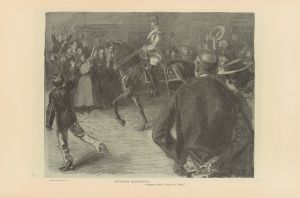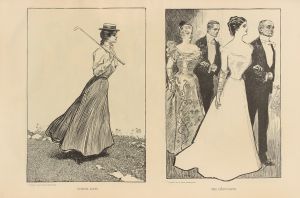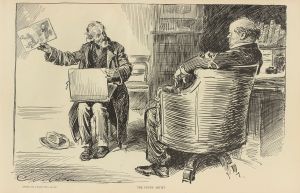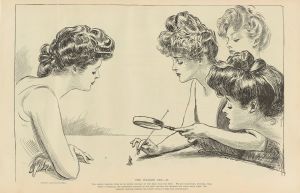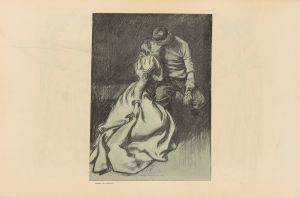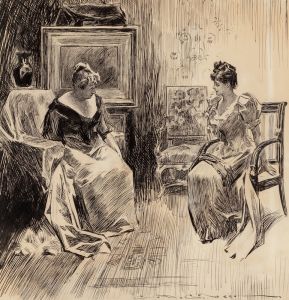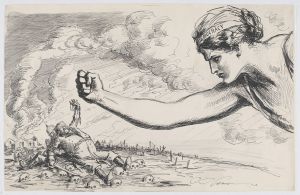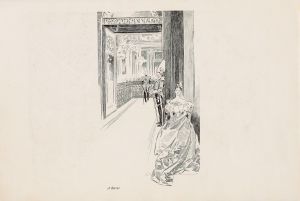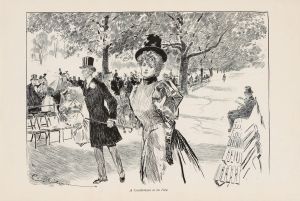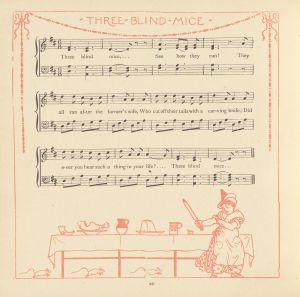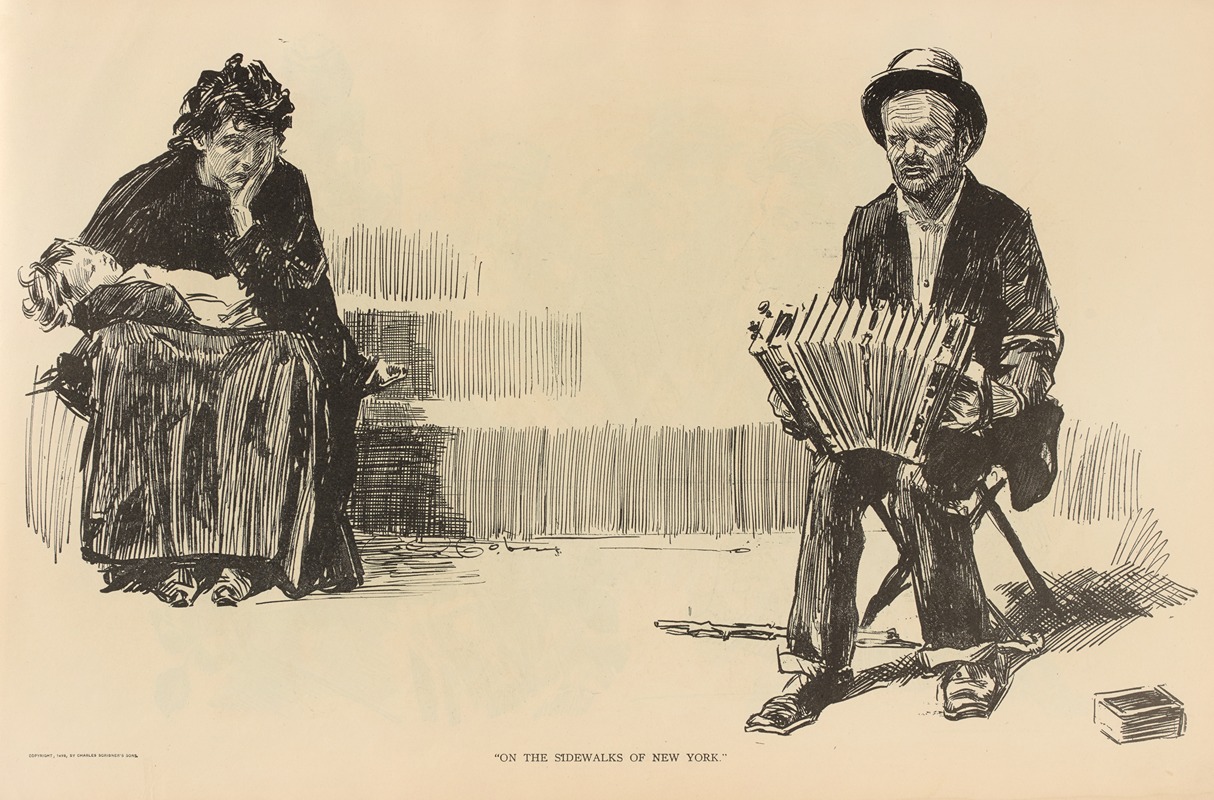
On the sidewalks of new york
A hand-painted replica of Charles Dana Gibson’s masterpiece On the sidewalks of new york, meticulously crafted by professional artists to capture the true essence of the original. Each piece is created with museum-quality canvas and rare mineral pigments, carefully painted by experienced artists with delicate brushstrokes and rich, layered colors to perfectly recreate the texture of the original artwork. Unlike machine-printed reproductions, this hand-painted version brings the painting to life, infused with the artist’s emotions and skill in every stroke. Whether for personal collection or home decoration, it instantly elevates the artistic atmosphere of any space.
Charles Dana Gibson was an influential American illustrator best known for his creation of the "Gibson Girl," an iconic representation of the American woman at the turn of the 20th century. His work captured the spirit and social dynamics of his time, often with a touch of humor and satire. One of his notable works is "On the Sidewalks of New York," which reflects the bustling urban life of New York City during this era.
"On the Sidewalks of New York" is a black-and-white illustration that showcases Gibson's keen eye for detail and his ability to capture the essence of a scene with precision and wit. The artwork depicts a lively street scene, characteristic of New York City's vibrant atmosphere in the late 19th and early 20th centuries. The illustration is populated by a diverse array of characters, each engaged in their own activities, yet collectively contributing to the dynamic tapestry of urban life.
Gibson's work often highlighted the contrasts and interactions between different social classes, and "On the Sidewalks of New York" is no exception. The illustration features well-dressed men and women, likely representing the city's affluent residents, alongside working-class individuals, all sharing the same public space. This juxtaposition is a common theme in Gibson's work, reflecting the social stratification and the mingling of different societal groups that characterized New York City during this period.
The "Gibson Girl" is notably absent from this particular illustration, which allows Gibson to focus on a broader depiction of city life rather than the idealized femininity that the "Gibson Girl" represented. Instead, the artwork captures the hustle and bustle of the city, with pedestrians navigating the crowded sidewalks, street vendors plying their trade, and the architectural backdrop providing a sense of place and time.
Gibson's illustrations were widely published in popular magazines of the time, such as Life and Harper's Weekly, reaching a broad audience and influencing public perceptions of urban life and social norms. His work, including "On the Sidewalks of New York," played a significant role in shaping the visual culture of the era, offering both entertainment and social commentary.
While specific details about the creation and publication of "On the Sidewalks of New York" are limited, the illustration remains a testament to Gibson's skill as an observer and chronicler of his time. His ability to capture the nuances of human interaction and the vibrancy of city life continues to be appreciated by art enthusiasts and historians alike. Through his work, Gibson provided a window into the world of early 20th-century America, with all its complexities and contradictions.








